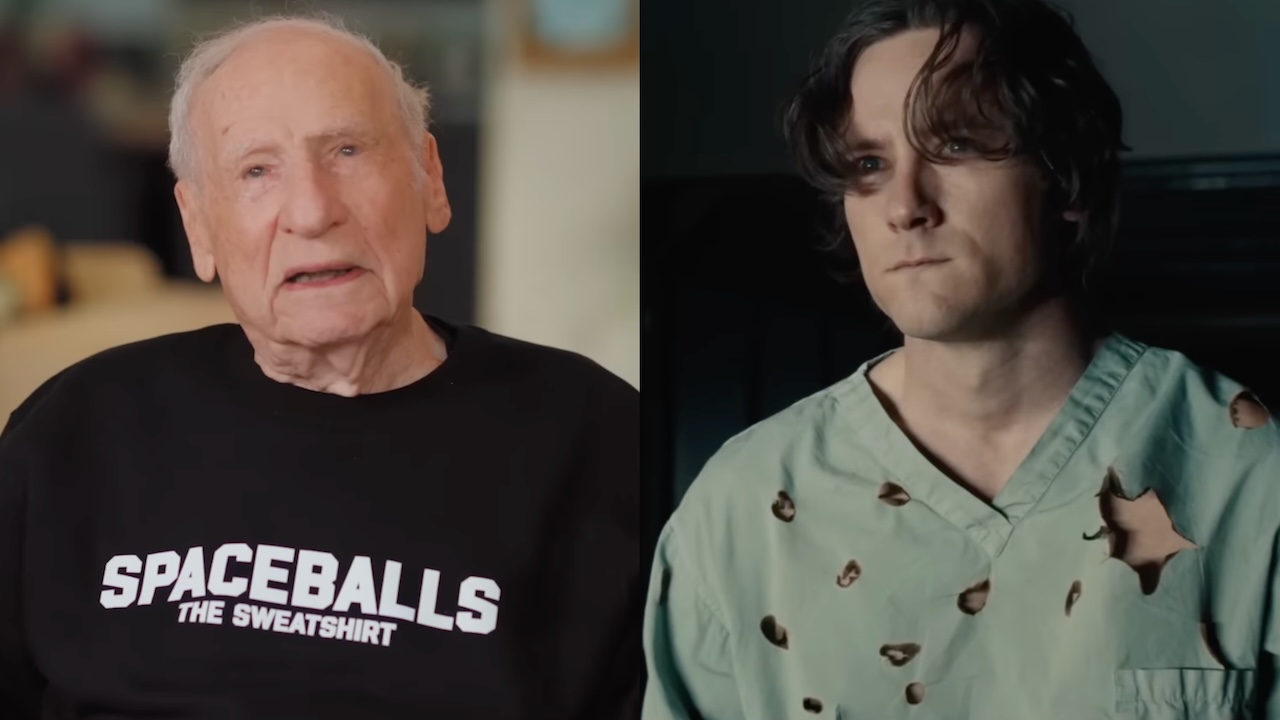How Christopher Nolan Pulled Off Oppenheimer's Atomic Explosion With Practical Effects
Quite an impressive feat.
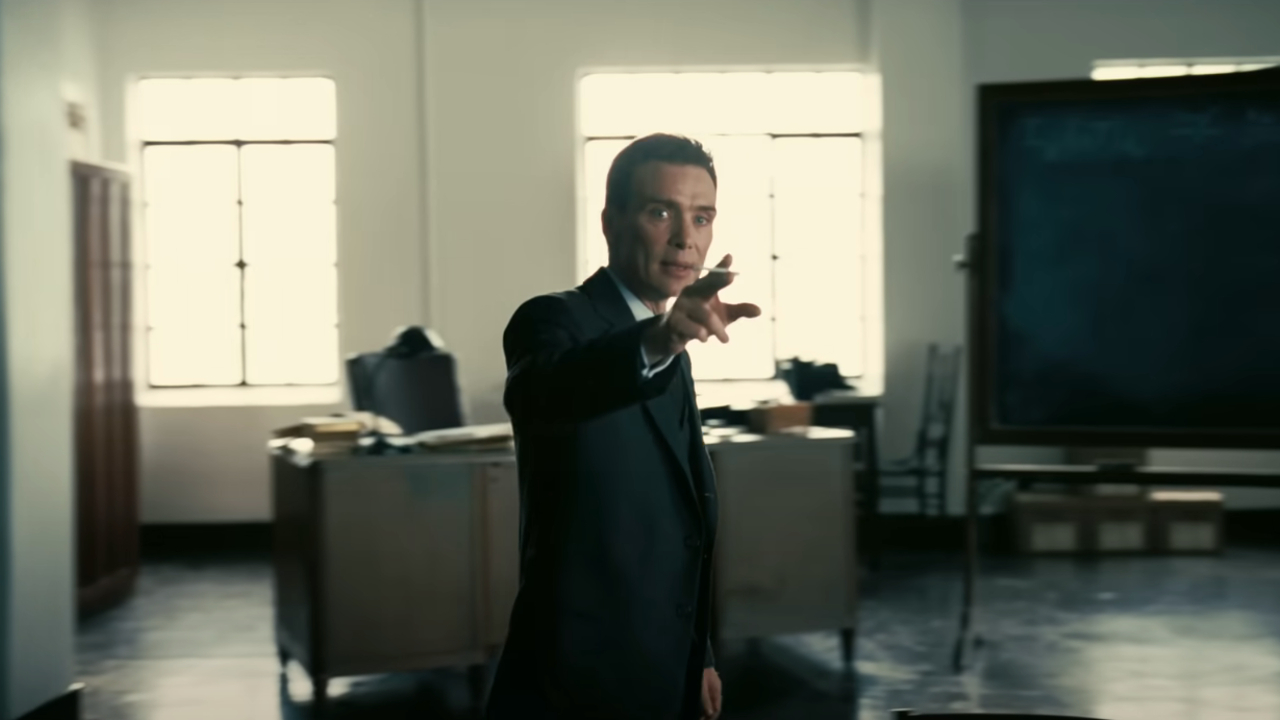
Christopher Nolan is one of those filmmakers with the mindset of doing as much as possible without needing to rely on CGI. He filmed Interstellar without green screen, used some old school tricks in the making of Dunkirk, and flipped an 18-wheeler end-over-end for one of The Dark Knight’s most iconic scenes. But, all of those pale in comparison to what Nolan was able to pull off with his latest feature, Oppenheimer.
For those who have seen the movie, which is a lot of people considering the film’s impressive opening weekend, there’s a good chance you’re thinking about one scene from the J. Robert Oppenheimer biopic: the Trinity test. And while Nolan didn’t set off an actual atomic bomb for the sake of cinema, the crafty auteur was able to film the beautiful and terrifying sequence using practical effects. Here’s how…

First, Let’s Talk About That Atomic Explosion In Oppenheimer
Though the Trinity test at Los Alamos isn’t the final scene shown in the Oppenheimer ending, the epic sequence could be considered one of several climactic moments in the three-hour film. Taking place just one month before the United States would drop atomic bombs on Hiroshima and Nagasaki to bring an end to World War II, J. Robert Oppenheimer (Cillian Murphy) and an army of scientists with the Manhattan Project test out the device and see if years of around-the-clock work and sacrifice would be successful.
And, successful it was, as the massive explosion deep in the New Mexico desert sent a towering fireball into the sky with blinding light and a shockwave that created a cinematic experience that felt like watching the real thing.
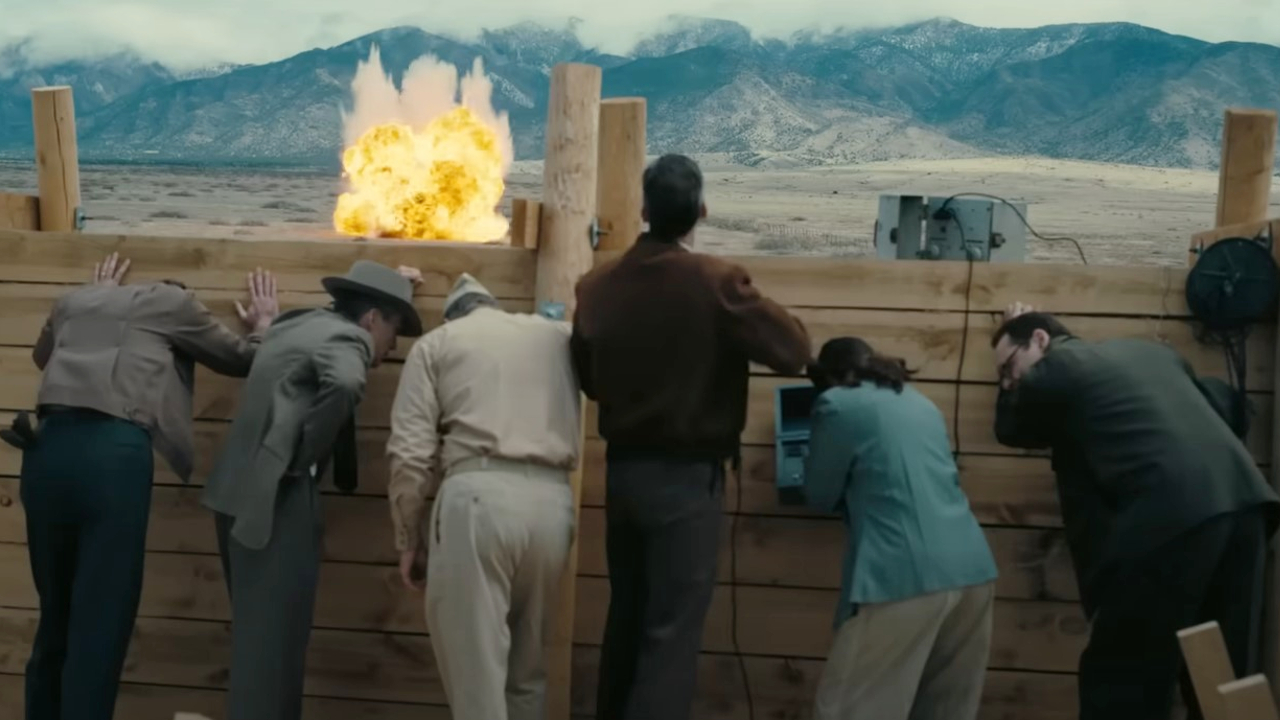
Christopher Nolan Felt CGI Was ‘A Little Safe’ For The Atomic Explosion
When it came time to craft the Trinity explosion, Nolan knew early on that he wasn’t going to be able to rely on CGI to make the scene as “threatening” as possible. During a chat with IGN, the director said that he used CGI during the nuclear explosion in The Dark Knight Rises ending, but felt that the sequence felt safe, which wouldn’t work with his latest release:
But when I came to Oppenheimer and I thought, okay, how do we portray the Trinity test? That first atomic device being detonated. That's not going to work because computer graphics, they're extremely versatile, and the detail that can be achieved and the variety of imagery that can be achieved is obviously unparalleled. But the results tend to feel a little anodyne, a little safe. It's very difficult to have computer graphics convey threat, which is why they have to be used very carefully in horror movies, for example. It's difficult to make CG threatening.
And was it threatening! The scene, which turned Oppenheimer into a horror movie for a few minutes, ended up being a masterpiece of technical achievement and ingenuity that will surely win the film major awards next year.

The Director Wanted To Make The Trinity Test Faithful To History But Also ‘Expressive’
Unlike the scene in The Dark Knight Rises, the Trinity test was based on an actual, real-life event, one that was heavily documented by those working on the project in the U.S. government. That being said, the plethora of images and videos of the 1945 explosion created somewhat of a balancing act for Nolan, as he had to stick with history while still being "expressive." As he told IGN:
Your Daily Blend of Entertainment News
So it was incumbent on us to be guided by, and not contradict, the documented reality, but to be expressive of it in our own way. I think it was fortunate for us that the bulk of the documentation of the Trinity Test is in black and white. So at the very least, by bringing color to it, we're being forced to make it our own.
Nolan would go on to reveal that a lot of the feeling of the sequence was based more on the firsthand accounts of those who witnessed the explosion for themselves rather than the photographs and film of it.

Nolan And Cinematographer Hoyte Van Hoytema Created ‘Science Experiments’ To Test Out Practical Effects
After deciding that the Trinity explosion would be captured in-camera, cinematographer Hoyte van Hoytema, who worked with Jordan Peele on Nope, told Variety that he and Nolan worked with special effects supervisor Scott Fisher and visual effects supervisor Andrew Jackson on “science experiments” to see see what was possible:
We built aquariums with power in it. We dropped silver particles in it. We had molded metallic balloons which were lit up from the inside. We had things slamming and smashing into one another such as ping-pong balls, or just had objects spinning. We had long shutter speeds, short shutter speeds, wide negative color, negative overexposure, underexposure.
This would ultimately pay off, as the effects featured in the sequence (and a number of the titular character's dreams) created a realistic illusion of an actual atomic bomb blast.
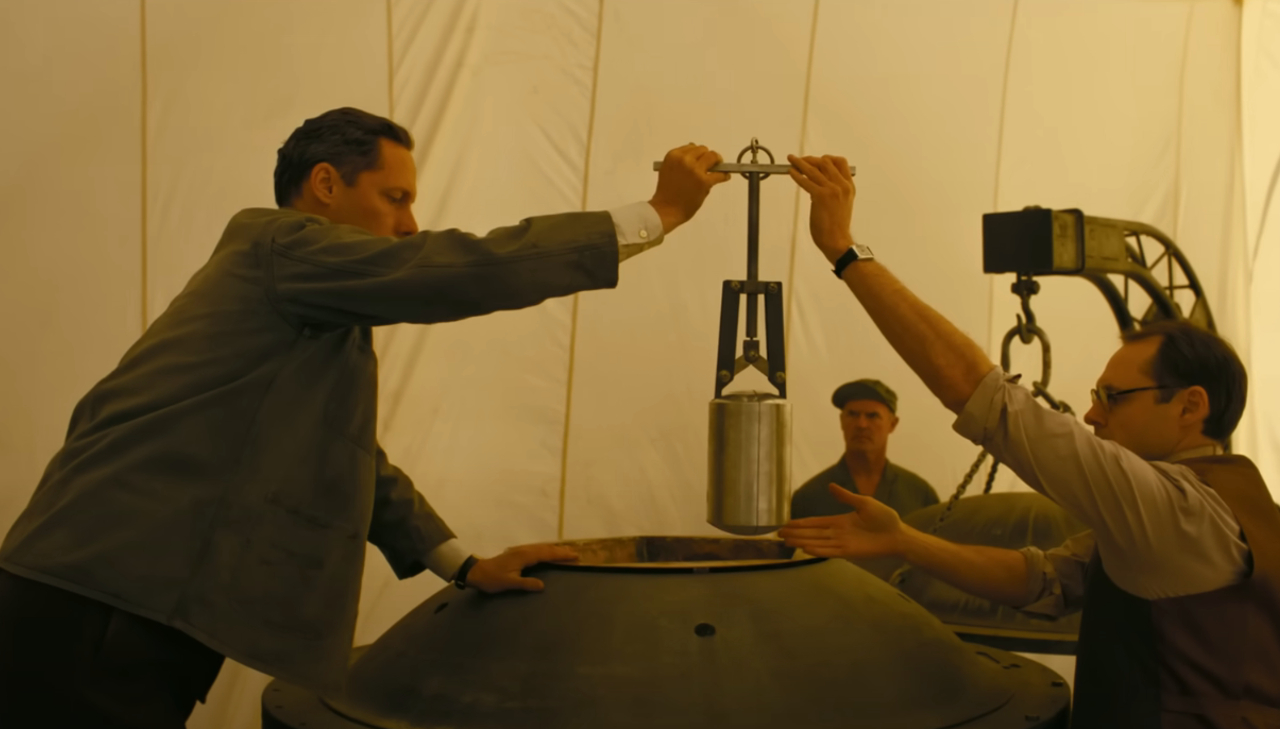
The Director And His SFX Team Ended Up Using ‘Big-Atures’ And Various Chemicals To Recreate The Explosion
When it came time to capture the shots that would be used in the atomic bomb sequence (remember, they didn’t detonate a real bomb), Scott Fisher told Total Film (via Slash Film) that the team pulled out an “old-school” trick for the desired effect:
It is like an old-school technique. We don't call them miniatures; we call them big-atures. We do them as big as we possibly can, but we do reduce the scale so it's manageable. It's getting it closer to camera, and doing it as big as you can in the environment.
What was in the “bomb?” Fisher went on to explain:
It's mostly gasoline, propane, any of that kind of stuff, because you get so much bang for your buck. But then we also bring in stuff like aluminum powder and magnesium to really enhance the brightness, and give it a certain look ... We did a bit of that on this, because we really wanted everyone to talk about that flash, that brightness. So we tried to replicate that as much as we could.
As anyone who has seen the movie knows (especially those with access to the rare 70mm IMAX format), the scene features an extremely bright flash of white light during the bomb’s initial explosion.
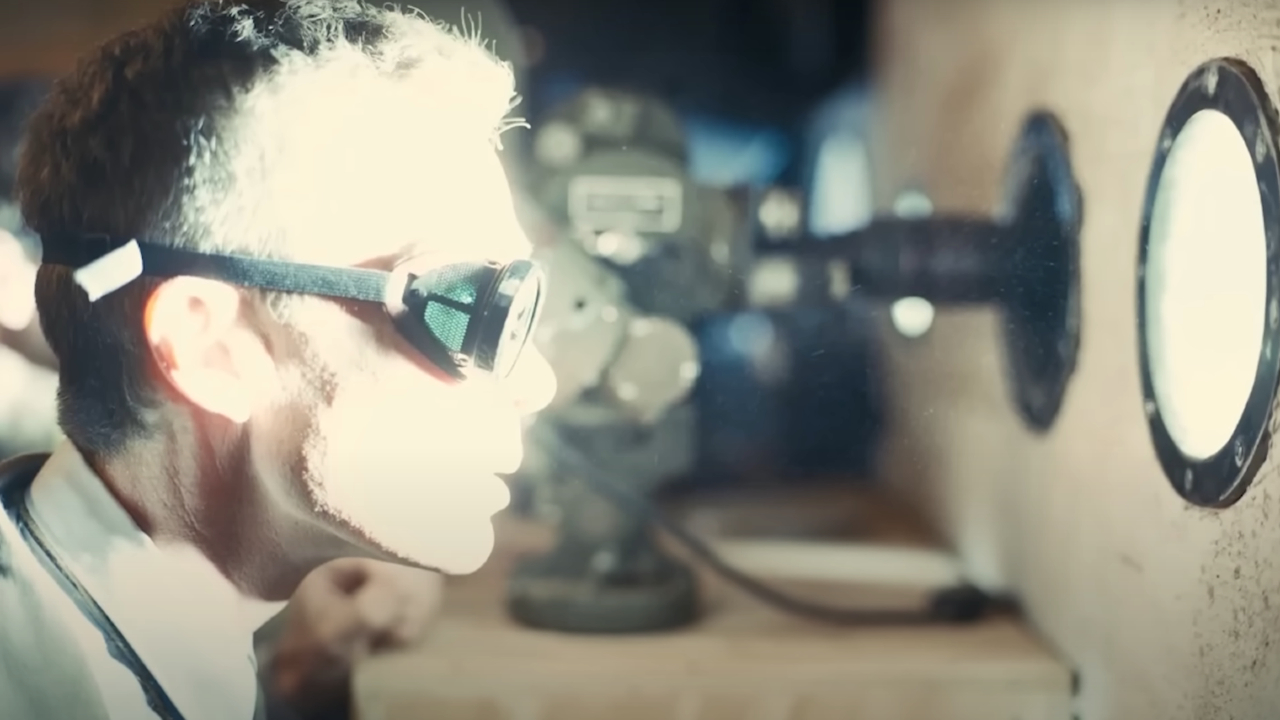
Nolan Has Called The Finished Sequence ‘Extraordinarily Beautiful’ And ‘Very Frightening’
Ahead of the film’s theatrical debut, Universal Pictures released a behind-the-scenes featurette about the making of Oppenheimer, which included some insight about the explosion from Nolan himself. In the six-minute video, he remarks that the Trinity explosion had to feel “nightmarish and terrifying” in a way that could never be pulled off with CGI. Thanks to the work and dedication of the team, they were able to capture those feelings:
What we were able to get into the finished film, to me, is extraordinarily beautiful but also very frightening.
The moment the bomb goes off, like those that lead up to it, was incredibly beautiful, terrifying, and powerful.
At this rate, there’s no telling what Christopher Nolan will explode (and how he goes about doing it) whenever he decides to make his followup film. Until then, we’ll just have to check out his previous films streaming or look forward to the other highly anticipated titles on the 2023 movie schedule.

Philip grew up in Louisiana (not New Orleans) before moving to St. Louis after graduating from Louisiana State University-Shreveport. When he's not writing about movies or television, Philip can be found being chased by his three kids, telling his dogs to stop barking at the mailman, or chatting about professional wrestling to his wife. Writing gigs with school newspapers, multiple daily newspapers, and other varied job experiences led him to this point where he actually gets to write about movies, shows, wrestling, and documentaries (which is a huge win in his eyes). If the stars properly align, he will talk about For Love Of The Game being the best baseball movie of all time.
